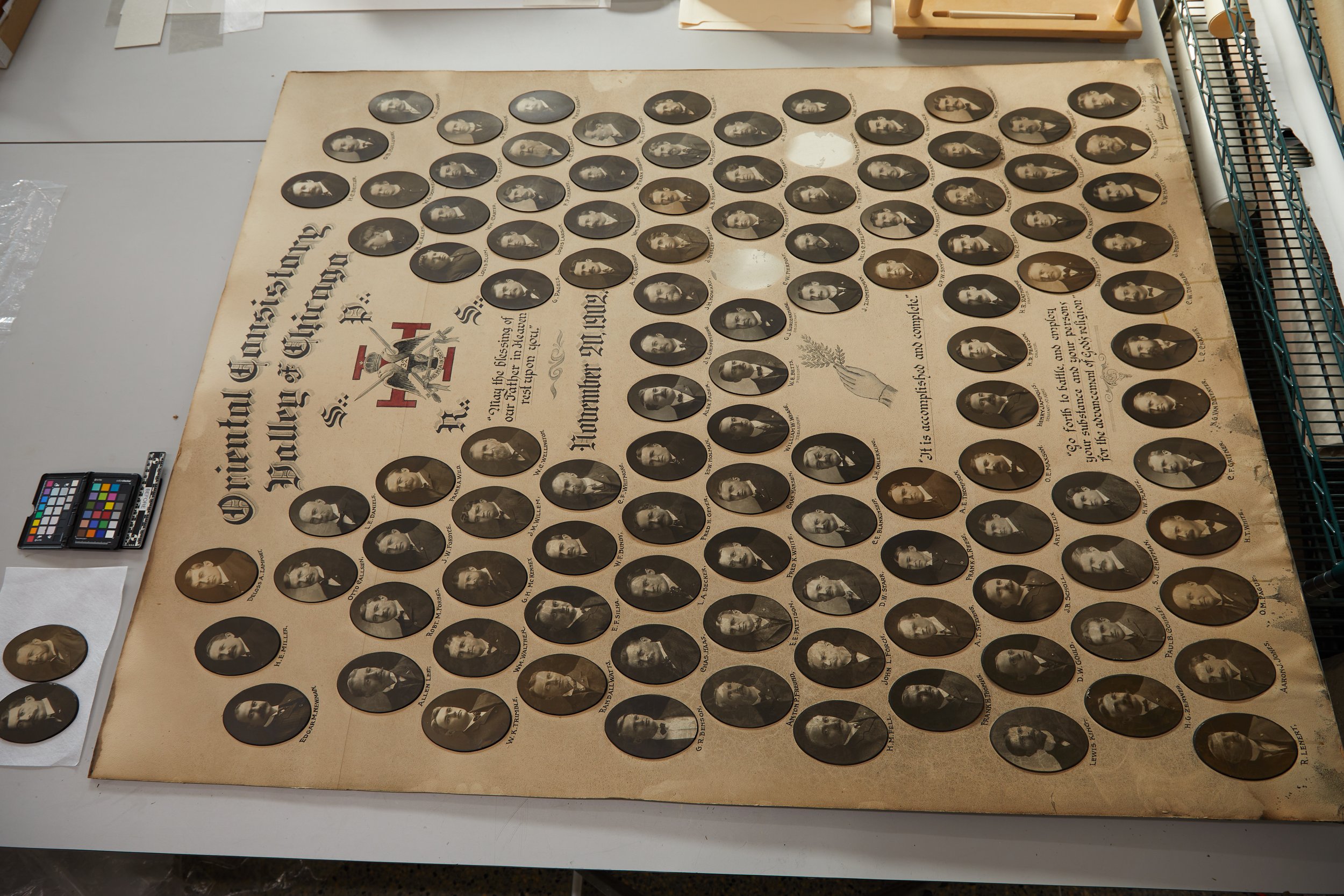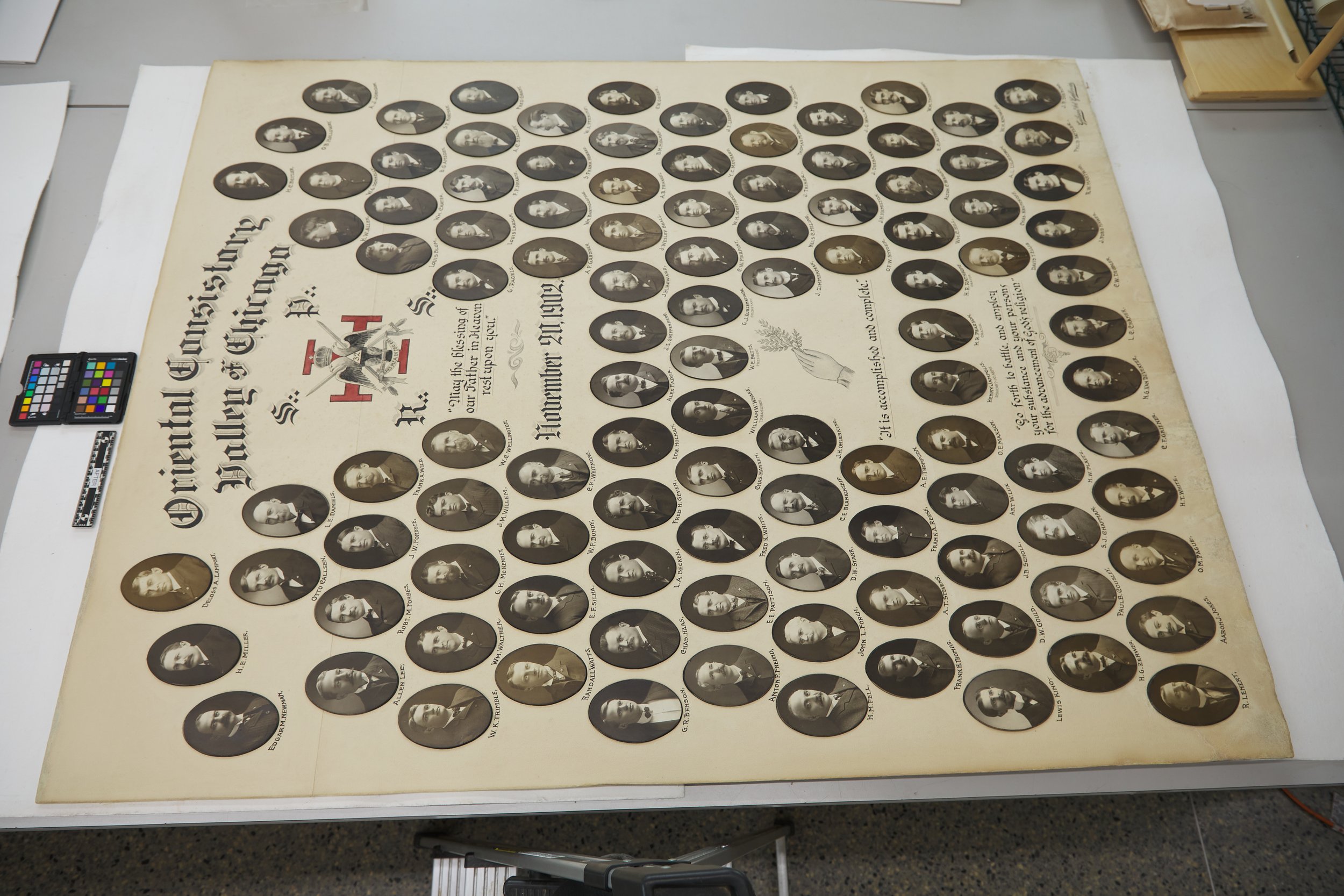One hundred twenty years of dust, grime, soot, and age - the early twentieth-century membership photographs from the Chicago chapter of the Scottish Rite showed their years. The photographs were taken and developed by the Gibson, Sykes & Fowler studio, one of Chicago's earliest photography studios that opened circa 1860.
Before Treatment; note the loose photograph present at the lower left.
Each of the one hundred nine silver gelatin photographs was individually mounted to a 4-ply black mat board; then, each mounted photograph was mounted onto the 51.5x65 inch mount board. The mount board also had printed elements; the organization's information along the top, the date of November 20, 1902, and names written in ink below each photograph. One photograph had come loose from the mount and was floating inside the frame at the lower right-proper corner.
Once unframed, it is easier to see that the photographs are mounted on the support board.
Before treatment; a second photograph was found to be detached from the mount once removed from the frame.
Upon examination, there were several condition issues present. The photos, mount, and frame exhibited a layer of surface dust and soot. The photographs exhibited age-related discoloration, fading, and silver mirroring, a chemical reaction in silver gelatine prints that result in a sheen on the surface of the photograph. The support mount exhibited age-related discoloration and is acidic material. The frame and glazing were covered in soot with evidence of water exposure on the surface of the glazing, which is likely the result of a historical fire or water damage. The glazing appeared to be antique glass and is non-UV filtering.
Detail of the photographs before treatment.
Recto detail of the detached photographs
Verso of the detached photographs
Detail of area where two photographs had come loose from the mount.
Verso of the mount before treatment.
The mount and each photograph required different surface cleaning techniques to reduce the surface soot and grime. The front and back of the mount were surface cleaned with a combination of soot sponges, eraser crumbs, and a low-suction vacuum to remove any loose surface dirt. In the video below, you can watch as the verso is cleaned using eraser crumbs, and the recto is cleaned using an eraser sponge.
The silver mirroring present on the silver gelatin prints was reduced using the appropriate aqueous solutions with cotton swabs. In the video below, the gelatin prints come back to life after cleaning.
With conservation now completed, the piece awaits its new framing that is designed to protect the photographs for the future.
Before Treatment













